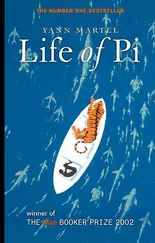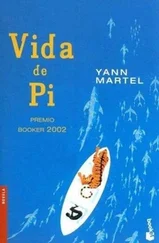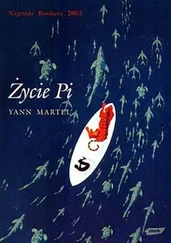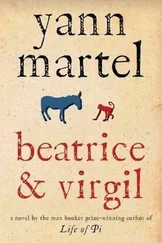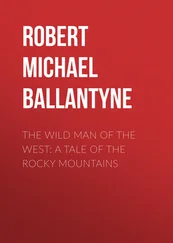Odo doesn’t run amok. He sits back down, producing a few inquisitive hoo, hoo, hoo s in a rising pitch. Some faces in the group smile at hearing the sound, perhaps reassured by the confirmation of a stereotype — apes really do go hoo, hoo, hoo .
“De onde é que ele vem? O que é que faz?” asks the same woman.
“Sim, sim,” Peter replies, again not knowing to what. “Eu quero uma casa em Tuizelo por viver com macaco amigável.”
By now, other villagers have turned up. They gather at a respectful distance. Odo is as curious about the villagers as they are about him. He pivots on the wall, looking, engaging, commenting with quiet hoo s and aarrrhhh s.
“Uma casa…?” Peter repeats as he strokes the ape.
The group in the garden at last begins to address his request. They talk to each other and he can hear the word “casa” being repeated along with what sounds like names. The conversation widens when one woman turns and calls out to another woman who is standing near his car. This villager responds and soon another conversation begins there. Occasional verbal volleys are tossed between the villagers around the car and the ones in the vegetable garden. The reason why they don’t come together is plain: Between the two groups is the gate, and guarding the gate like a sentinel is an ape.
Peter thinks that he should perhaps refine his request. A house on the edge of the village would be best. He looks in the dictionary.
“Uma casa…nas bordas de Tuizelo…nas proximidades,” he calls out, somewhat addressing his request to the woman who first spoke about Odo, but intending it for everyone to hear.
The discussion starts again, until the woman, who has willingly taken on her role as his main interlocutor, announces the result of it. “Temos uma casa que provavelmente vai servir para si e o seu macaco.”
He understands nothing except “uma casa” and “seu macaco”. A house and your ape . He nods.
The woman smiles and looks pointedly at the gate. He promptly goes through it and nudges Odo off the stone wall. Odo drops to the ground next to him. They walk a few steps towards the car. The group in the garden advances towards the gate, while the group around the car melts away. He turns to the woman and indicates in various directions. She points to the right, up towards the top of the village. He moves in that direction. Mercifully, Odo stays at his side. The woman trails along at a safe distance. Villagers ahead of them disperse, as do the chickens and dogs. Except for the chickens, all the villagers, human and animal, join in following the newcomers. He regularly turns to make sure they are going the right way. The woman, leading the villagers some fifteen paces behind, nods to confirm that he is, or redirects him with her hand. And so, leading the group while in fact following it, he and Odo walk through the village. Odo strolls along nicely on all fours next to him, despite being powerfully interested in the chickens and dogs.
They emerge from the village. The cobbled street becomes a dirt road. After a turn, they cross a shallow stream. The trees grow more sparse, the plateau starts to show. Shortly, the woman calls out and points. They have reached the house.
It is no different from many of the others in the village. It is a small two-storey stone structure, L-shaped, with a gated stone wall completing the other two sides of the L to create a house with an enclosed courtyard. The woman invites him into this courtyard, while staying outside the gate with her companions. She indicates that the second floor is reached by the external stone staircase. Then she points at Odo and to a door on the ground floor. Peter opens it; it has no lock, only a latch. He is not happy with what he sees. Besides being filled with quantities of stuff, the room is filthy, everything covered in dust. Then he sees a ring attached to a wall and notices that the door he just opened is divided in two horizontally, and he understands. This floor is a pen, a stable, an enclosure for livestock. He has seen any number of such houses on their drive but only now grasps their design. The animals — the sheep, goats, pigs, chickens, donkeys — live below their owners, who thus have them close-by and safe, and who profit in winter from the warmth their livestock generate. It also explains the outside staircase. He closes the door.
“Macaco,” the woman says in a helpful tone from the other side of the low stone wall.
“Não,” he replies, shaking his head. He points up the stairs.
The people nod. The foreigner’s macaco wants to live upstairs, does it? It has a taste for luxury?
He and Odo climb the stone stairs. The landing, of wood with a roof, is large enough to qualify as a balcony. He opens the door. It doesn’t have a lock, either. Burglary doesn’t seem to be a problem in Tuizelo.
He is better pleased with this top floor. It is rustic, but it will do. It has a stone floor (easy to clean) and little furniture (less to break). The walls are very thick and covered in uneven whitewash, showing areas of rise and fall, but clean; they look like a plausible map of the High Mountains of Portugal. The layout of the flat is simple. The door opens onto a main room that has a wooden table with four chairs, some shelves built into the wall, and a cast-iron woodstove. To one side of this room, the top of the L, separated by a wall that goes only halfway across, is the kitchen, which is fitted with a large sink, a propane gas stove, a counter, and more shelves. At the other end of the living room, through a doorway without a door, he finds two rooms in a row, the bottom of the L. The first room contains a wardrobe whose door holds a large mirror speckled with age. The end room has a bed with a mattress long past its prime, a small bedside table, a chest of drawers, and a primitive bathroom with a sink and a dusty, dry toilet. There is no shower or bathtub.
He returns to the living room, scanning the bottoms of the walls. He examines the ceiling of each room. There are no electrical outlets or light fixtures anywhere. In the kitchen he confirms what he thought he did not see; indeed, there is no refrigerator. The place has no electricity. And no phone jack, either. He sighs. He turns the kitchen faucet on. No gush of water disturbs the silence. Two of the windows are broken. Everything is covered in dust and grime. A wave of fatigue washes over him. From the Senate of Canada, surrounded by all the amenities of the modern world in a capital city, to this cave-age dwelling on the fringes of nowhere. From the comfort of family and friends to a place where he is a stranger and does not speak the language.
He is saved from his impending emotional meltdown by Odo. The ape is evidently delighted with their new digs. He gives out excited hoots and bobs his head as he races from one end of the apartment to the other. It is, Peter realizes, the first habitation Odo has seen outside the cages he has lived in his whole adult life. So much bigger and airier than anything he has known. And better than the cars he has been dwelling in this last week. Perhaps Odo thought he had traded living in a hanging cage for living in a cage on wheels. By captive ape standards, this house is the Ritz.
With good light, come to think of it: There are windows in every wall. The sun will be their light bulb. And there’s charm — and economy — in the idea of lighting the place in the evenings with candles and lanterns. And if there is plumbing, there must once have been running water, which can no doubt be restored.
Peter approaches one of the windows facing the courtyard. He opens it. The villagers are waiting patiently on the other side of the courtyard wall. He waves and smiles at them. What is “good” in Portuguese? He consults his dictionary. “A casa é boa — muito boa!” he cries.
Читать дальше

